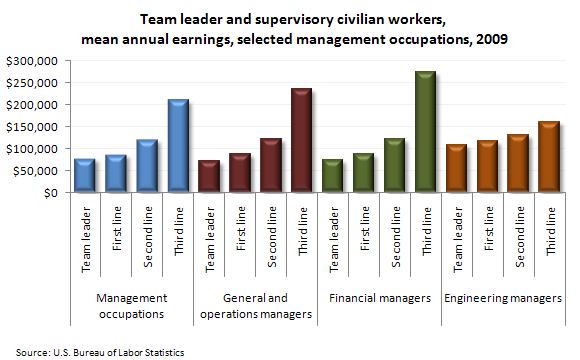The Bosses’ Bucks
It’s not surprising to hear that bosses are making the big bucks. But it may be interesting for recruiters to see which professions have the biggest percentage increase between second line and third line management. This distinction may help recruiters better understand the hiring practices of the companies they serve.
Government findings show that in financial management, there is a major jump in pay scale for senior management positions. In a field like engineering, the pay scale is pretty consistent for all managers.
In 2009, within civilian industries, wages for supervisors in management occupations ranged from an average of $75,485 per year for team leaders to an average of $208,510 per year for third-line supervisors.
If recruiters are unfamiliar with some of the categories of supervisors, the National Compensation Survey classifies supervisors according to their level of supervisory responsibility, regardless of titles. Team leaders, or lead workers, have the authority to make, coordinate, and review work assignments of employees performing the same general work as the lead worker on a day-to-day basis. First-line supervisors direct their staff through face-to-face meetings and are responsible for conducting the employees’ performance appraisals. Second-line supervisors direct the actions of staff through intermediate supervisors. Third-line supervisors direct the actions of staff through multiple subordinate levels of supervision.
Civilian workers are defined as the sum of all private industry and State and local government workers. Federal Government, military and agricultural workers are excluded.


